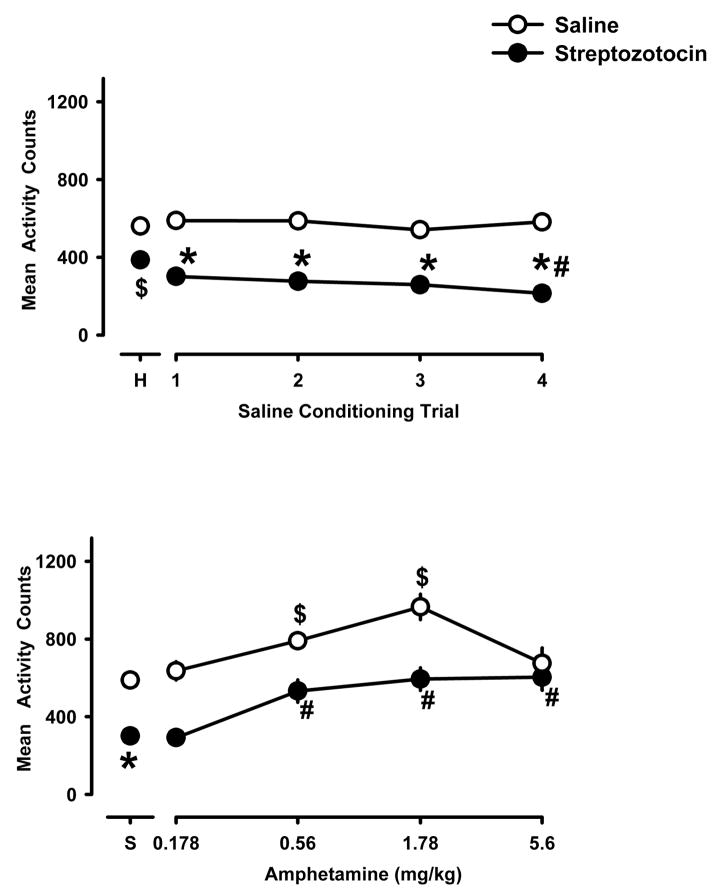Fig. 2.
Locomotor activity (counts per 30-min session) in saline-treated (open symbols) and in streptozotocin-treated (closed symbols) rats during an initial habituation session (“H”), during each of the four every-other-day saline conditioning trials (upper panel), and during the first conditioning trail with amphetamine (lower panel). Each data point in the upper panel is the mean ± S.E.M. for 40 rats (same rats as shown in the lower panel) and with the exception of data above “S” (which shows the baseline activity in the first saline conditioning trial for all 40 rats) each data point in the lower panel is the mean ± S.E.M. for 10 rats. Data for 1.78 mg/kg amphetamine in both groups are replotted from a published study (Owens et al., 2005) that was conducted at the same time as this study. $P<0.05 compared with the habituation session (upper panel) or with the first saline-conditioning trial (lower panel) in control rats; *P<0.05 compared with saline-treated rats in the corresponding conditioning trial; #P<0.05 compared with streptozotocin-treated rats in saline conditioning trial 1.

